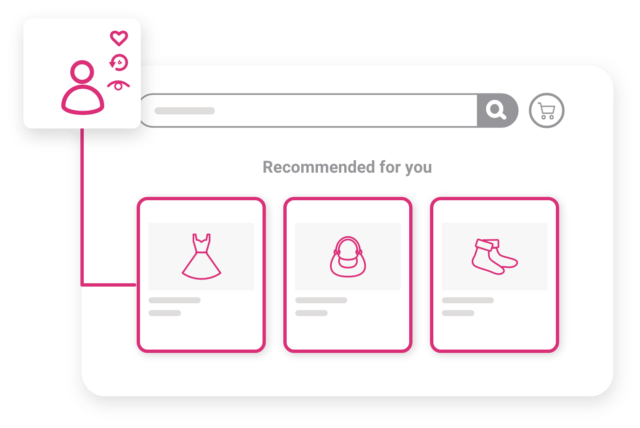An effective product recommendations engine can improve a user’s experience on your ecommerce site, and ultimately help increase sales.
Simply put, a product recommendations engine is an intelligent tool that uses shopper behavior and data to surface personalized recommendations to a visitor based on certain factors.
Why is this important? A 2018 Accenture Interactive study showed “83% of consumers are willing to share their data to enable a personalized experience.” This means customers want to have personalized experiences online, just as they might have in store.
What should a product recommendations engine offer?
There is no one-size-fits-all approach to ecommerce recommendations. In fact, your product recommendation algorithm should offer control and flexibility so you can implement a strategy that makes sense for your business. Keep reading for examples of the types of recommendations you can offer on your store, where you should place them, and how to optimize them.

Cross-sell recommendations
Promoting products that complement something a site visitor has already shown an interest in can often help increase average order value as well as improve overall user experience.
Example: A customer views a 47” television
Cross-sell: Offering a speaker system or a 5-year extended warranty
Up-sell recommendations
Offering customers a slightly more expensive (but perhaps better quality) product than the one they’ve just viewed.
Example: A customer views a 47” television ($249)
Up-sell: Offering a more expensive but more robust 47” TV ($289) or a 52” TV ($339)
Similar recommendations
When a customer visits a product page, provide alternate options of products that are comparable. This can help the customer see items they may have missed which are closer to what they were originally looking for.
Example: A customer views a 47” Sony TV
Similar recommendations: You might also like — 47” LG TV or 49” Sony TV
Trending products
Trending products feature a list of your most popular items. This helps shoppers get a glimpse of what’s popular and selling fast on your site. These may or may not be products in the same category as they’re viewing.
Example: A customer views a 47” TV
Trending products: Most popular products include Amazon Fire TV, Bose speakers, etc.
Personal product recommendations
A good product recommendation algorithm is able to make suggestions based on an individual shopper’s order history or recently viewed items. This isn’t limited to the product detail page, personal recommendations can be made site-wide.
Example: A customer purchases a 47” TV
Personal product recommendations: Recommended for you — compatible speakers, accessories etc.
Session recommendations
Session recommendations focus on products a customer has reviewed during their current visit, and suggest alternatives they might also like.
Example: A customer views a 47” Sony TV
Session recommendations: Based on your “recently viewed” products — 47” Insignia TV, 52” Samsung TV, Logitech headset, Insignia headset




